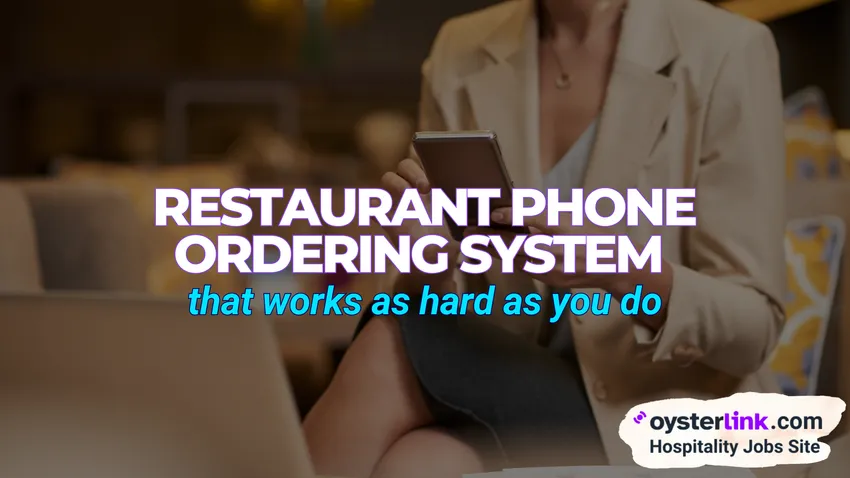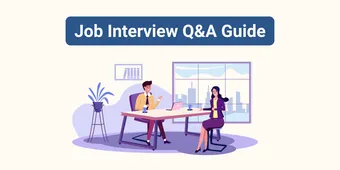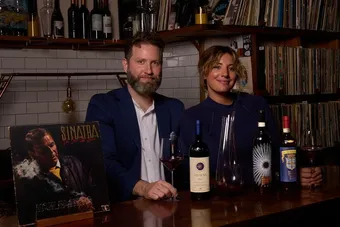Restaurant Phone Ordering System Key Takeaways:
- 31% of calls are lost during peak hours — that’s up to $15,500/month down the drain for a restaurant doing $50K in phone orders
- Smart prompting systems increase average ticket sizes by 15–25% through personalized upselling
- Mobile orders lead customers to spend 25% more and reduce mistakes by 30%
- Cloud-based systems eliminate hardware costs, maintenance contracts and unexpected outages — all for one predictable monthly fee
Studies show restaurants lose up to 31% of phone orders during peak hours due to busy signals, long holds and miscommunication. That’s $11,500–$15,500 vanishing each month for a business doing $50K in phone orders.
The old process—staff scribbling orders while juggling guests—is no longer just outdated. It’s costing you customers and cash. This guide shows how top restaurateurs are turning their phone systems into sales engines, using smart tech to reclaim lost revenue and streamline operations.
The True Cost of Analog Operations
While your team is busy serving tables, your phone system is quietly bleeding profits. Every missed call, order error and distracted staff member is a symptom of an analog process that simply can't keep up with modern demand.
What seems like a minor inconvenience—another hold, another misheard order—is actually costing your restaurant thousands each month and driving loyal customers to competitors.
In this section, we break down the hidden but devastating impacts of sticking with outdated phone operations—and show why the cost of doing nothing is far higher than you think.
The abandoned call crisis
Your phone rings. A hungry customer waits. After 45 seconds on hold, they hang up and call your competitor. This scenario plays out thousands of times monthly across restaurants still operating with outdated phone systems.
Research from the National Restaurant Association reveals the crushing statistics:
- 23% of restaurant phone calls are abandoned after 45 seconds on hold
- During dinner rush, abandonment rates climb to 31%
- Weekend periods see abandonment rates exceeding 35%
- Each abandoned call represents an average lost revenue of $32-47
.png)
The error epidemic
Manual order transcription creates a cascade of costly mistakes that extend far beyond simple inconvenience. Every illegible ticket, missed modifier, or incorrect address creates operational chaos and customer dissatisfaction.
The financial impact compounds:
- 12% of handwritten phone orders contain errors requiring correction
- Kitchen re-fires cost an average of $18 per incident in labor and food waste
- Customer dissatisfaction from order errors reduces repeat visit probability by 40%
- Staff stress from error management decreases overall service quality and increases turnover
The multitasking disaster
When phone orders interrupt table service, both experiences suffer. Servers attempting to simultaneously take phone orders and serve in-person guests provide diminished service quality across both channels.
The operational consequences include:
- 27% longer table service times when servers handle phone interruptions
- Reduced tip averages due to divided attention
- Increased customer complaints about both phone and in-person service
- Higher staff stress levels leading to increased turnover rates
What the Modern Solution Looks Like
Modern phone ordering systems aren’t just upgraded switchboards. They’re purpose-built to fit into your operations seamlessly — helping you serve better, sell more and stress less.
When a customer calls, they’re not bounced around or stuck listening to a loop. Instead, smart routing sends the call where it’s most needed.
Busy Friday night? Instead of keeping customers on hold, they just leave their number. You call them back when you can breathe. They're happy, you captured the sale and nobody's stressed
Your tech talks to itself. The phone system syncs with your POS, your kitchen display, your inventory, even your delivery partners. No double-entry. No missed tickets. Just clean, clear communication from customer to kitchen.
And all of it runs on the cloud. That means no clunky hardware, no surprise maintenance fees, and updates that roll out without lifting a finger. You scale up effortlessly as demand grows — without needing to hire extra staff or overhaul your setup.
Even the IVR (interactive voice response) experience is totally reimagined. No more “press 1, press 2.” Customers can talk normally — and the system understands. It remembers them, speaks their language, and guides them naturally through the order.
At the core of it all? Data. Your system learns. It recognizes your regulars. It knows what they like, when they order, and what upsells work best — making it easier to offer something they’ll actually say yes to.
How It Works: Seamless From the First Ring
Let’s pause for a moment and consider what a phone call to your restaurant actually represents. It’s not a casual browse or a maybe-later scroll — it’s a customer making the effort to connect directly with you.
It’s immediate, intentional and personal. In that moment, your phone system becomes your front door.
A modern ordering system ensures that door opens smoothly — every time. It removes the friction that so often derails these interactions: the missed calls, the long holds, the misheard items. Instead, the experience is quick, clear and quietly impressive.
What used to rely on rushed staff and handwritten notes now runs with silent precision in the background — directing the call, capturing the order, syncing with your POS and kitchen, even alerting your team when it's time to follow up.
Here’s how it works, step by step.
- They’re greeted instantly — no ringing, no busy signal. If your team is tied up, the system offers a callback or provides wait time updates.
- The call is routed smartly — it might go to the Cashier, a trained order-taker, or even a remote staffer depending on who’s available.
- Orders go straight to your system — not a scribbled ticket. The phone order hits the POS, the kitchen display and (if needed) the delivery platform all at once — no retyping, no rechecking.
- Your team gets real-time prompts — “this customer usually orders family-style,” or “don’t forget to upsell dessert.”
- You never lose a lead — the system tracks call attempts, records caller preferences and makes it easy to follow up with those who didn’t place an order.
.png)
From the first ring to final prep, the system handles the logistics, so your team can focus on what they do best: creating great food and great experiences.
The Revenue Opportunity You Can’t Ignore
You know that wonderful moment when a guest comes in looking a bit unsure, and you help them discover exactly what they're craving?
Maybe they were thinking about "just a sandwich," but you mention how perfectly it pairs with your signature soup and suddenly they light up — "That sounds perfect!"
Well, that same magic can happen over the phone, and honestly, it should be happening with every single call.
Here's the beautiful thing: when customers call, they're already in a buying mindset. They've chosen you over all their other options. They trust you enough to place an order sight unseen.
That's the perfect moment to be genuinely helpful — to let them know about that amazing seasonal special they haven't tried yet, or to mention that most families find the large size works out better for sharing.
Modern phone systems make this incredibly natural. Instead of your staff scrambling to remember every promotion while juggling three other tasks, the system gently reminds them: "This customer loves trying new things" or "They usually order for the whole family."
The result? Your team feels confident making recommendations because they're based on real insight, not guesswork. Your customers feel cared for because the suggestions actually make sense for them.
.png)
Making the Change Smooth for Your Team
Yes — change can be intimidating. But adopting a modern phone ordering system doesn’t have to throw your team off balance. In fact, when done right, it lightens their load and makes their jobs easier almost immediately.
Start small. Introduce the basics to a few team leads during slower shifts. Let them get comfortable, give feedback and build confidence.
As they become your internal champions, it becomes much easier to roll things out across the rest of your staff. Because the system is designed to be intuitive, even team members who aren’t tech-savvy adapt quickly.
There’s no need to memorize complex processes or fumble with clunky interfaces. Just simple, clear tools that work the way your team already thinks. With built-in training, ongoing support, and continuous updates, your staff doesn’t just learn the system — they grow with it.
No one gets left behind, and no one has to choose between service and learning. It's a smoother, smarter way to move forward — together.
The Financial Reality: It Pays for Itself
Traditional phone systems are quietly draining your profits. Between hardware expenses, maintenance fees, missed calls and order errors, the costs add up quickly.
Modern phone ordering systems turn that around. Instead of unpredictable expenses, you get a straightforward monthly subscription.
In return, you benefit from faster service, fewer mistakes, more completed orders and, ultimately, increased profits.
Here's how the numbers break down:
- Labor savings: Online ordering systems reduce the need for dedicated phone staff, leading to significant cost savings in labor.
- Increased order volume: Streamlining your restaurant’s online ordering system to allow customers to order and pay at the same time will drive an increase in online orders.
- Higher ticket sizes: Customers who order online tend to spend more. Studies show that mobile orders result in customers spending 25% more and reduce order errors by 30%.
- Avoiding third-party fees: By implementing an in-house online ordering system, you can avoid hefty fees charged by third-party delivery apps, which can range from 15% to 35% per order.
The bottom line is: most restaurants see their investment in a modern phone ordering system pay off within a few months. After that, it's all upside: increased revenue, happier customers and a more efficient operation.
Conclusion
Sticking with outdated phone systems in today’s restaurant environment is like cooking with a dull knife. You can do it — but it’s harder, slower and more frustrating than it needs to be. A modern phone ordering system doesn’t just take calls — it supports your team, grows your revenue and delights your guests.
It's not about replacing your human touch. It’s about amplifying it — with smart, seamless tools that fit the way you actually run your restaurant. If you're ready to stop missing out on revenue, reduce chaos and build a smoother operation, the path forward is clear — and it’s never been more within reach.









Loading comments...